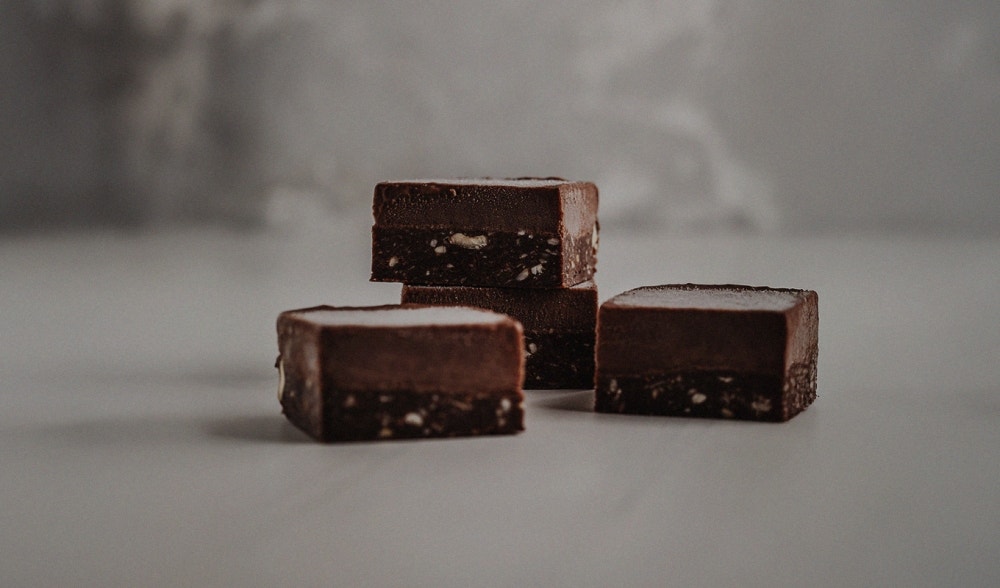Protein bars: buying guide and useful tips
How to choose the best protein bars and above all how to recognize them? Now available in different formats and flavors, protein bars are consumed not only by athletes, but also by those who follow a healthy lifestyle and are therefore looking for a protein snack without too much sugar.
On the market you can find many types, both online and in physical stores and supermarkets, they are excellent as a mid-morning or mid-afternoon snack and, thanks to the presence of proteins, they contribute to the maintenance of muscle mass and the feeling of satiety.
But how to recognize a quality bar?
Characteristics and nutritional values of protein bars
The first protein bars developed were in all respects sweets, of which the dough was used and which was then enriched with powdered milk proteins, especially whey, to increase the protein content. However, like all sweets, they contained in addition to proteins also numerous fats and sugars. Over the years, the production of protein bars has improved significantly and today it is possible to find technical but at the same time tasty bars.
Obviously, protein bars must provide a good amount of protein to be considered as such: it is possible, in fact, to define a protein bar when at least 12% of its caloric content comes from proteins, while it can be defined as rich in proteins (or high protein) when at least 20% of the caloric content comes from proteins.
How much protein is in a bar?
The protein % certainly represents an important value for those looking for a protein bar: it will help us understand how many proteins are contained in the bar. Generally, the protein percentage is between 30 and 35% and is obtained by adding proteins to the dough. Bars with % higher than 35-40% usually have added ingredients in the list that are not exactly "clean" and which increase the total protein content but not the biological value (one of the most important parameters for evaluating a protein).
These additions are usually collagen, amino acids, creatine or glutamine, which increase the total protein content but are not proteins that can actually be used by the body. The final numerical result changes, so for example 20g of protein per bar, but we are talking about proteins with a very different biological value from whey.
Type of proteins in protein bars
The proteins most used for the production of protein bars are certainly concentrated whey proteins (whey), but isolated or hydrolyzed whey proteins can also be used. It is easy to find bars that also contain soy proteins (which improve the stability of the dough and also its homogeneity), and for vegan/vegetarian sources we find the use of pea proteins, rice proteins or mixed vegetable sources.
Based on the protein most present and its biological value, we can help ourselves in choosing the bar that best suits our needs, as we will see later.
How much protein should we consume?
Before helping you choose the best protein bars, let's take a step back: is it really necessary to eat protein bars? The answer is no.
They are certainly convenient and practical for snacks and snacks, but they are not essential. They can certainly be useful for reaching the protein requirement, or the amount of daily proteins necessary to maintain and increase our muscle mass. Various leading scientific societies, such as the American College of Sports Medicine, recommend a protein intake of between 1.2 and 2 g/kg weight/day for athletes, reaching levels of 2.2-2.5 g/kg weight/day for athletes of power sports or body building, unlike what is recommended for healthy sedentary people, or 0.8 g/kg weight/day. These variables are subjective and also depend on the duration and intensity of the sporting activity.
What are the best protein bars
So, what are the best protein bars? Obviously it depends on your specific needs, and above all on what you are looking for. If you need energy, we recommend you go for energy bars (with dried fruit and carbohydrates) but if you are looking for a clean protein source to use as a snack or snack, to reach your protein requirement and maybe because you are cutting, we definitely have what you need!
The perfect protein bar for dieters and high-level athletes: with 37% protein, with 22g of high biological value protein per bar and with Volactive whey protein isolate, PerformancePRO is a satiating bar (60g format), also perfect for post-workout. It contains only clean proteins and has no added collagen or amino acids.
It is a multilayered, delicious and quality bar, perfect for everyone: with 32% high biological value proteins and Volactive whey protein isolate, without collagen, palm oil or other additives, it is ideal for snacks or snacks. In 10 new flavors, Iso-Fuji BAR combines the protein quality of Iso-Fuji (the highest quality Yamamoto Nutrition milk protein isolate) and the delicious taste of a sweet treat (the new flavors also include salted caramel, wafer and cappuccino).
Protein bars and meal replacements
But can protein bars replace a meal? Our answer is NO: protein bars, however good and nutritious, in most cases provide mainly proteins. A complete meal, on the other hand, is usually made up of proteins, carbohydrates and fats. For this reason, there are specific bars, "built" to contain all these nutrients.
Protein bars are perfect as snacks, snacks and to always carry with you. Now that you know all the secrets to choosing the best protein bars you are ready to put the perfect protein snack for every need in your backpack!


Comments
Write a comment about the article